While death is still a taboo in the modern western world, some cultures like Toraja, in the mountainous region of South Sulawesi, Indonesia, still preserves a unique bond between life and death. This Mysterious Toraja rituals is one of the highlight for the Tourist visiting the area. The complexity of this ritual is a result of many aspects delivered through generations of ancestors, and something unique that can’t be found anywhere else on the planet. The Torajan funeral ceremony being one of the most important, elusive and expensive events of their life, it is truly, a once in a lifetime sight to witness for anyone. Find out more about this ceremony in four main steps that conclude the staircase to heaven for the indigenous Torajans.
Step 1: Preservation of the Body
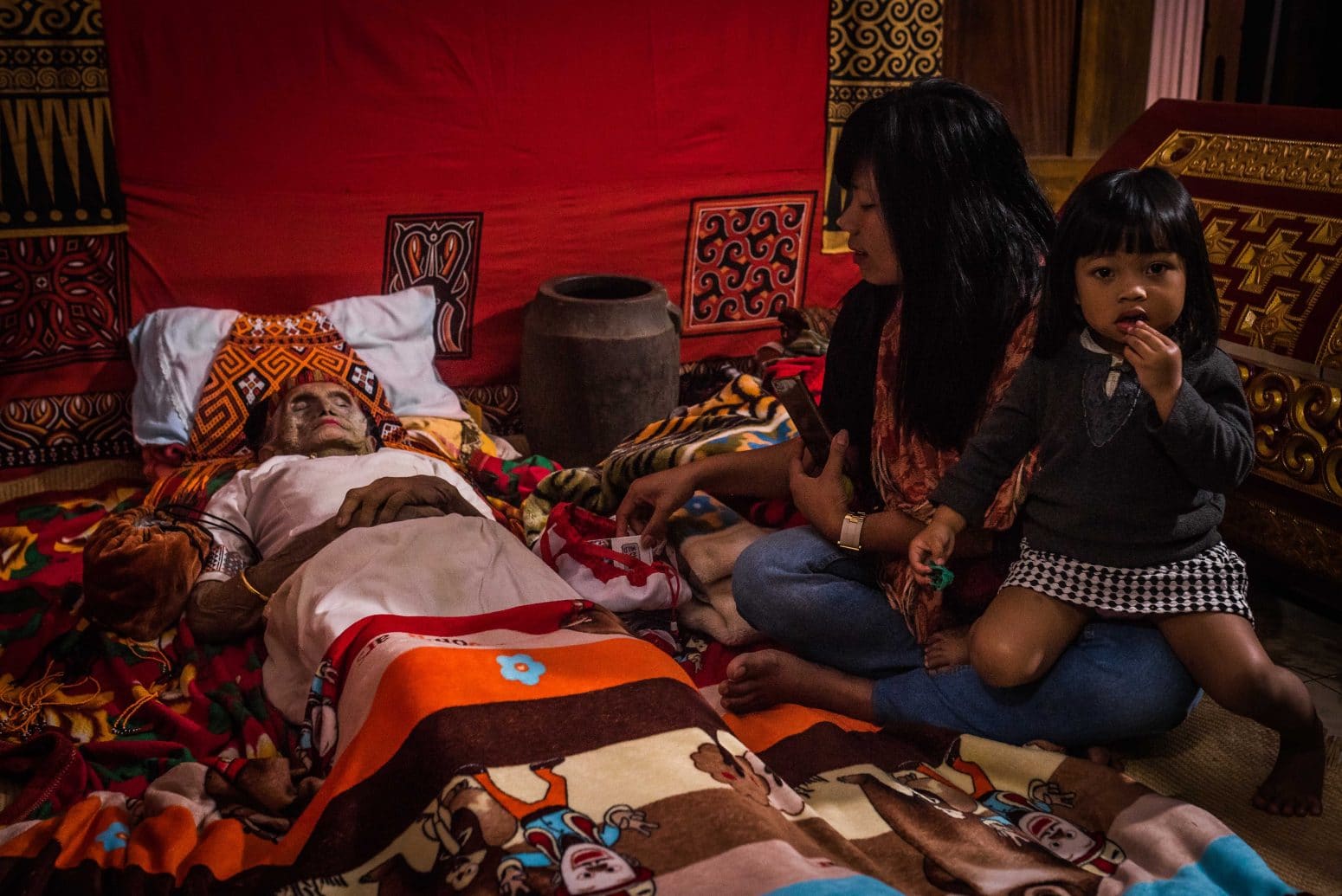 So what happens after the Torajan passes away? By the beliefs of Torajans, death doesn’t come instantly, but rather it’s a gradual process, sometimes a long one that can take months or even years to complete the deceased’s passage to the afterlife known as Puya. And for that to happen, the burial and its extravagant ritual must be processed.
So what happens after the Torajan passes away? By the beliefs of Torajans, death doesn’t come instantly, but rather it’s a gradual process, sometimes a long one that can take months or even years to complete the deceased’s passage to the afterlife known as Puya. And for that to happen, the burial and its extravagant ritual must be processed.
Until then, the body is usually kept for long periods of time until the family raises funds to perform the funeral ceremony. The body is treated as a sick person and placed in the room that points towards the south – the believed location of heaven.
Meanwhile, the deceased body is preserved by using various methods such as using herbs, formalin injections and more. As the person was a part of the family before, it will continue to be treated like one with great respect, care and attention every single day while the body still rests at home.
Step 2: Tau Tau Carvings
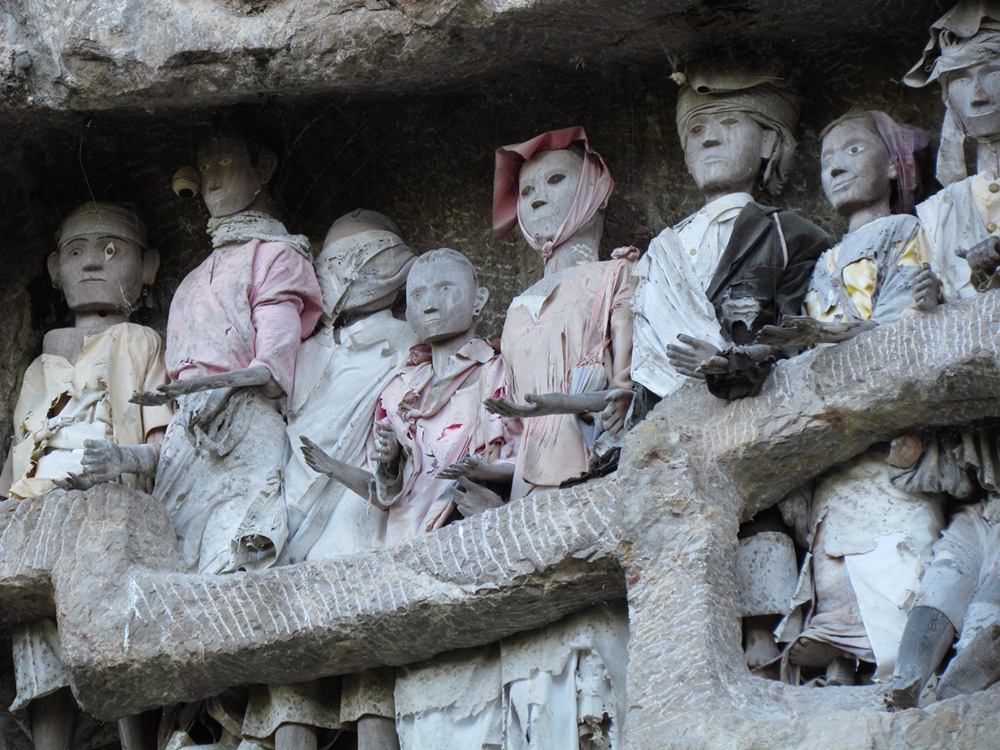 Although usually reserved for those on a more wealthy side and not affordable by everyone, the Tau Tau plays an important part in this unique process.
Although usually reserved for those on a more wealthy side and not affordable by everyone, the Tau Tau plays an important part in this unique process.
These wood-carved effigies are not only dressed up in former clothing of the deceased but today, the today, contrary to the past, carvings now can resemble the person quite well.
When the time of the burial comes, the wooden figure is placed above the entrance of the cave looking out over the native lands.
Step 3: The Rambu Solo & Sacrificing the Animals
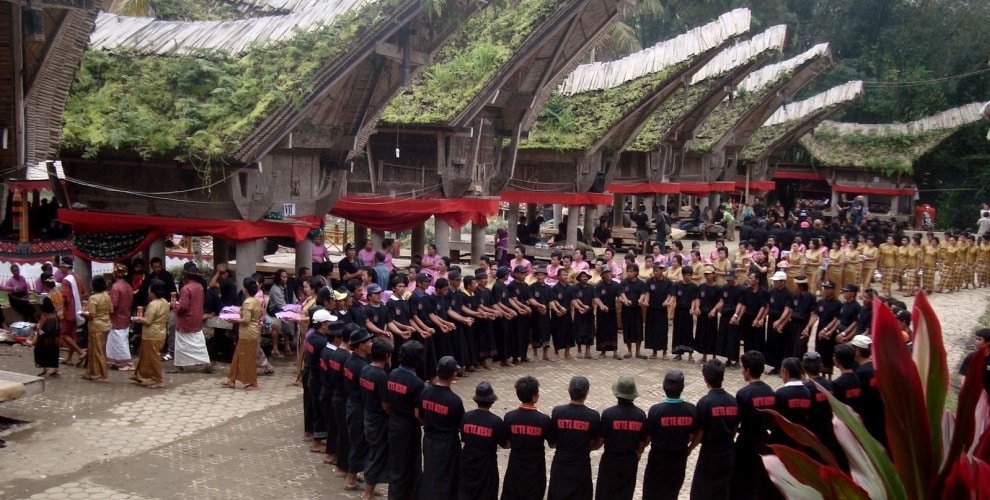 Another step and powerful component of the ceremony is sacrificing and slaughtering the animals, mostly water buffalo, and pigs. The Trojans strongly believe that the deceased need a buffalo to make the transition and journey to Puya faster. The more wealthy and noble the more buffalo’s, pigs, and chickens will be sacrificed at the ceremony.
Another step and powerful component of the ceremony is sacrificing and slaughtering the animals, mostly water buffalo, and pigs. The Trojans strongly believe that the deceased need a buffalo to make the transition and journey to Puya faster. The more wealthy and noble the more buffalo’s, pigs, and chickens will be sacrificed at the ceremony.
Guests can also bring an animal as a gift, that transforms into a debt which is repaid once death visits a member of that family.
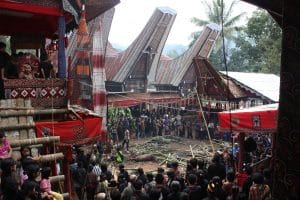
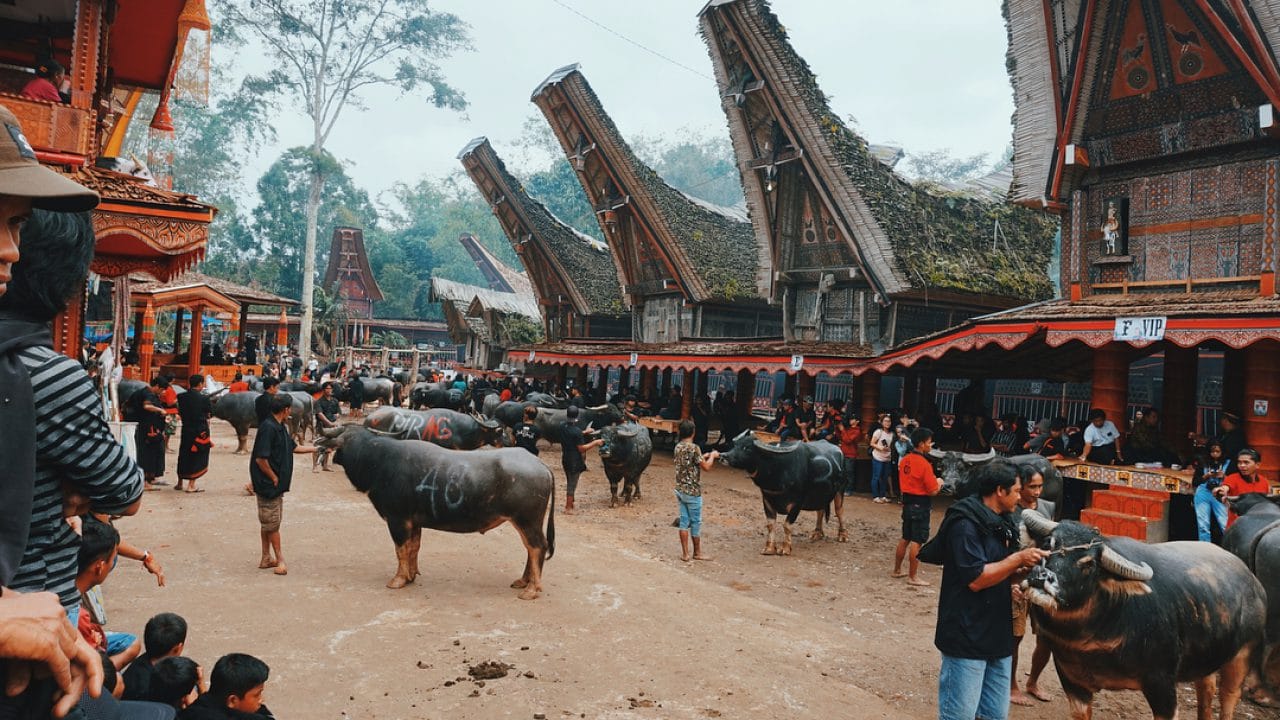 However, for the animals, this is not the end, as the cockfight of at least 25 pairs of chicken is a key and integral part of the ceremony. The slaughter of dozens of animals, rivers of blood accompanied by dancing and music is the ultimate climax of this elusive death fest. The poetic songs honor and cheer the life of the deceased while traditional dances express grief and war movements praise the courage of once alive person.
However, for the animals, this is not the end, as the cockfight of at least 25 pairs of chicken is a key and integral part of the ceremony. The slaughter of dozens of animals, rivers of blood accompanied by dancing and music is the ultimate climax of this elusive death fest. The poetic songs honor and cheer the life of the deceased while traditional dances express grief and war movements praise the courage of once alive person.


This is when you know, that Rambu Solo, the official funeral ceremony is happening before your eyes.
Step 4: Cave Burial
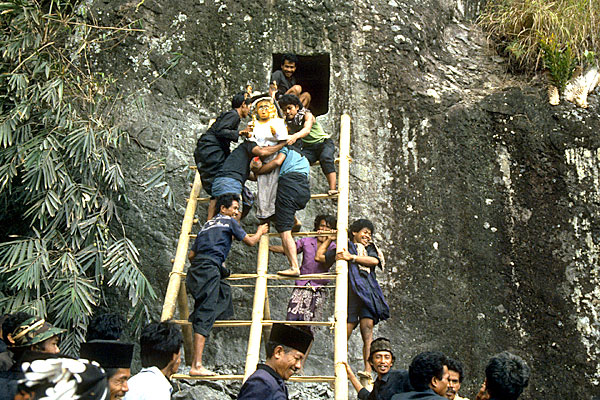
Generally, the more wealthy and noble, the higher they will be buried and vice versa. Sometimes the deceased is buried in a hanging coffin from the side of the cliff. And that is until the ropes or coffin disintegrated and everything fell down to the ground.
Some of these carved stone caves and burial sites are now categorized as traditional tourist attractions and gives us a glimpse into the unknown realm of spirits.
The original text link: https://www.indoglobaltours.com/2019/08/07/toraja-land-life-beyond-death-in-4-steps/
No comments:
Post a Comment
Only the questions and comments about travel are OK here, thanks: